by Sean K | Jul 20, 2017 | Call Making, Game Call Construction
What is a Custom Game Call? I was at a waterfowl festival in a booth selling my calls and this question came up. Another custom call maker in the next booth over, answering a customer’s question, put it into words that totally hit the mark with me. A custom game call is more than a piece of wood or plastic that makes animal sounds. It is a little piece of the maker. A part of the craftsman that designed the call, turned the call and tuned the call. A little part of the craftsman that put his heart and soul into that call.
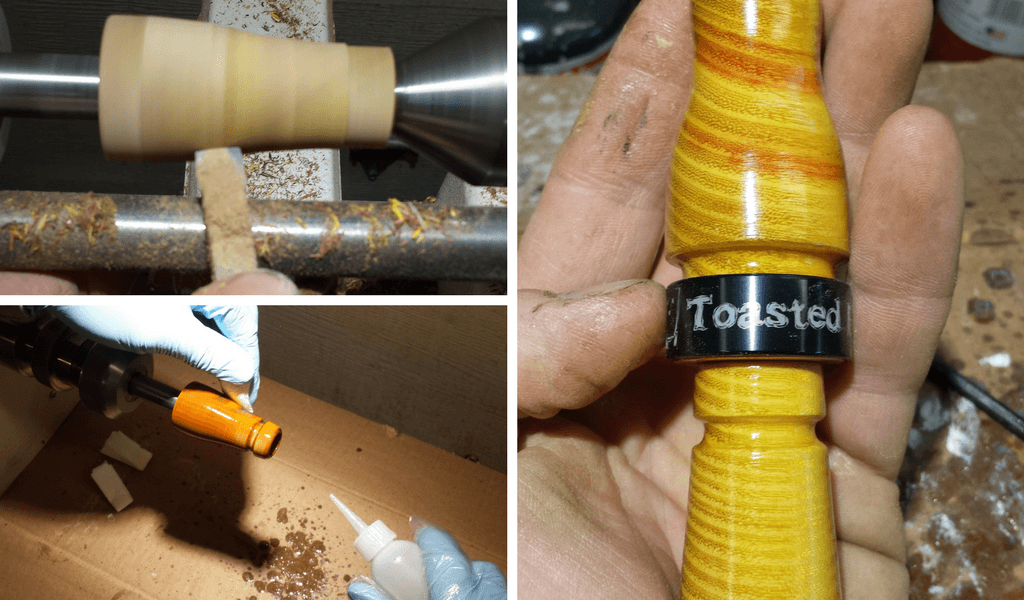
Every call that a custom call maker makes by hand is an original. The materials for each call is selected with care. The call may be the same type of material or the same species of wood as other calls but each call is an original, it’s own grain, color or pattern. The craft of making calls has been around for years and the techniques have been passed from maker to maker. I always learn new things from other call makers. Most I’ve been around love to share tips with other call makers but we all still maintain our own style. There is more than one way to skin a cat!!!
I hand craft or modify all the tone boards for all my calls. I try to get each call to sound exactly same as the last one, but there are always little difference in the sound of a call. It is in the nature of handcrafting calls or anything else handmade. Different woods have different densities therefore different tones or ringing coming out of that call. Not every call will fit every person. Five people can blow the same call and you get five different ways the call sounds. I love having customers try my calls and give me they’re feedback. The comments help me make better calls.
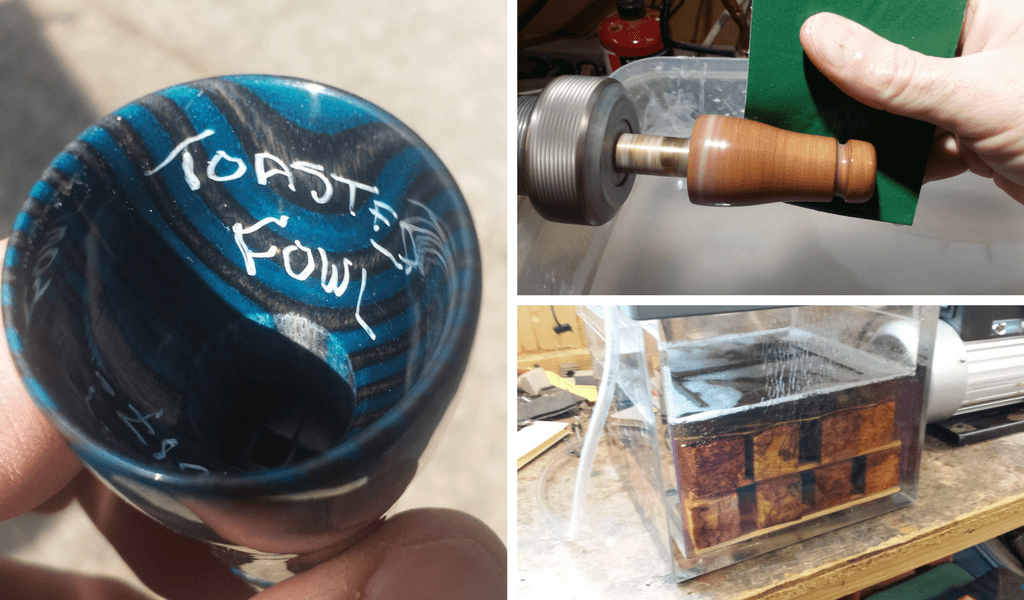
With me, as well as any other custom call maker, the knowledge and techniques acquired go into every call they make. If you buy a custom game call you are not only buying a handmade call but also a little piece of that craftsman.
by Sean K | Aug 22, 2015 | Duck Calls, Elk Calls, Game Call Construction
I have been working on this call for a couple of years. The goal was to build the toughest, loudest, most versatile and most easy to use elk call on the market. I believe that the “Whole Gang Elk Call” call has met all those goals. These are truly hand made calls. Each call is hand turned, hand tuned and made one at a time. I try to source all the materials to be made in the United States.
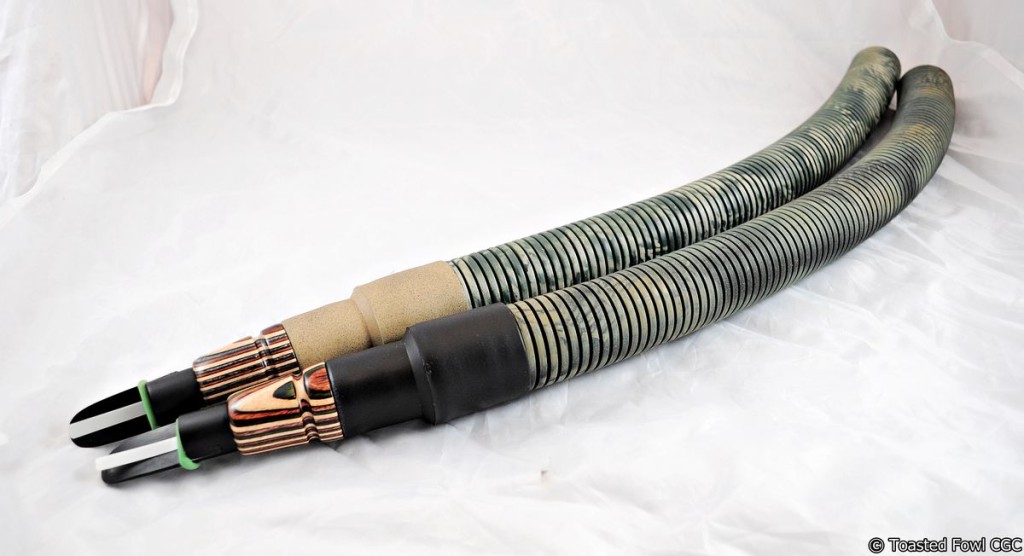
Inland Mountain Camo (top call) & Coastal Forest Camo
One of the big differences is the open reed tone board. I’ve seen open reed on cow calls and predator calls. I made the tone board very wide (7/8″) for comfort and ease of use. The toneboard is hand turned and hand cut from Delrin (acetal plastic) and is very stable to temperature changes
The Mylar reed is simply tough, I’ve only had one reed go bad on me in two years of testing and it still worked, the reed just didn’t sound right so I changed it out. Testing included putting the call in the freezer, then baking it on a hot dashboard in very hot weather for a day, then repeat the process multiple times. The reed never melted, ripped or stuck and always sounded the same no mater what the conditions. Try that with a latex reed call!
The wood SpectraPly bell’s exterior is finish with CA (Cyano-Acrylate) which is a very tough waterproof finish. The interior is finished with a water base finish made specifically made for game calls. Since it is water base there is no smell and the CA has no odor either.
The tubes I found for this call are a very tough and can take a ton of abuse. You can run over the tube with a truck and it will not totally constrict. It may be a little oval but still be usable on the call. The paint on the tubes was a sticking point on the project. I didn’t want the cloth that other calls use. The cloth either ripped off or was encased in devils club or cockle burrs when done hunting. We couldn’t get the paint to stick on them, but through trial and error a buddy solve the problem. He came up with two patterns of camo with corresponding SpectraPly, The patterns are call Coastal Forest with Camo Supreme SpectraPly and Inland Mountain with Buckskin SpectraPly.
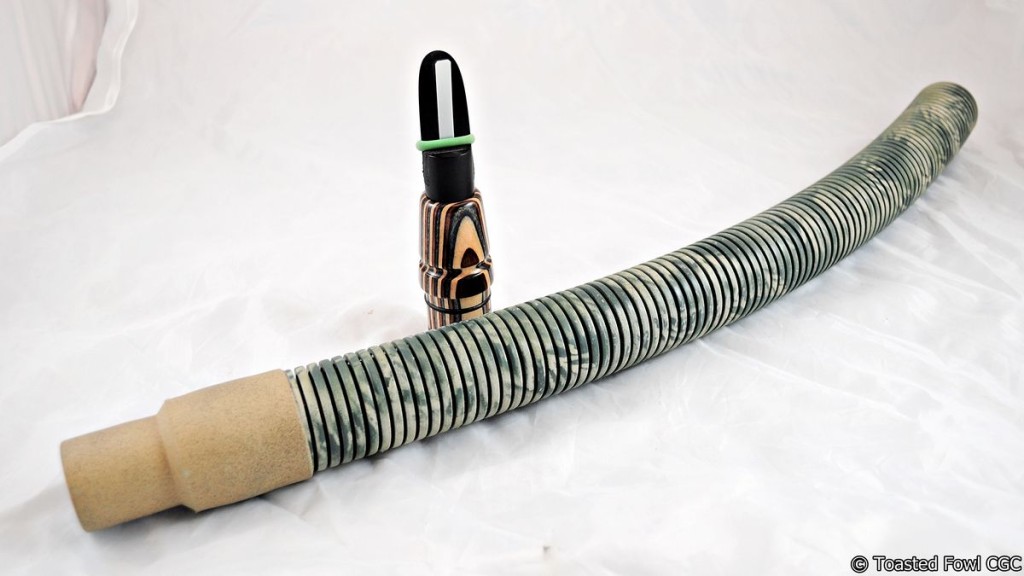
Showing the head detached from the tube ready for cow calls.
The “Whole Gang” comes from the versatility of the call. The call can bugle any pitch you want to do with the one reed. Small bull bugle, large bull bugle, locator/see you chirps, cow calls and calf calls. It can imitate a whole gang of elk with one call.
I will get some sound files and will have videos very soon. Any questions about the call just contact me on the Contact Page.
Click on “Whole Gang Elk Call” to purchase a call.
And remember to “Go Let The Air Out Of One”!!!
by Sean K | Jun 20, 2015 | Bite Reed Elk Calls, Duck Calls, Game Call Construction
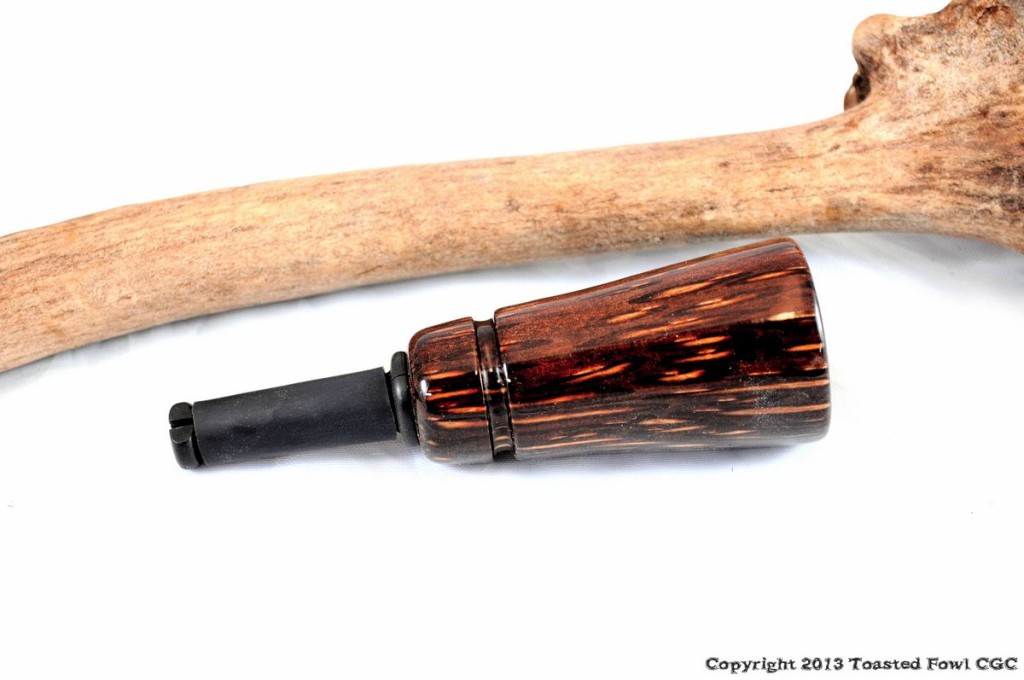
Black Palm is one of the woods that need to be stabilized.
What is stabilizing wood. It is a process to help wood reduce seasonal movement and it’s reaction to changing humidity. Sometimes the wood movement in certain woods would actually spider crack the Cyano-acrylate (Superglue) finish I applied before I started stabilizing. The stabilizing also gives wood a higher density which helps with the turning of the wood and the tone of the calls. Wood stabilizing is also used in knife making and pen turning.
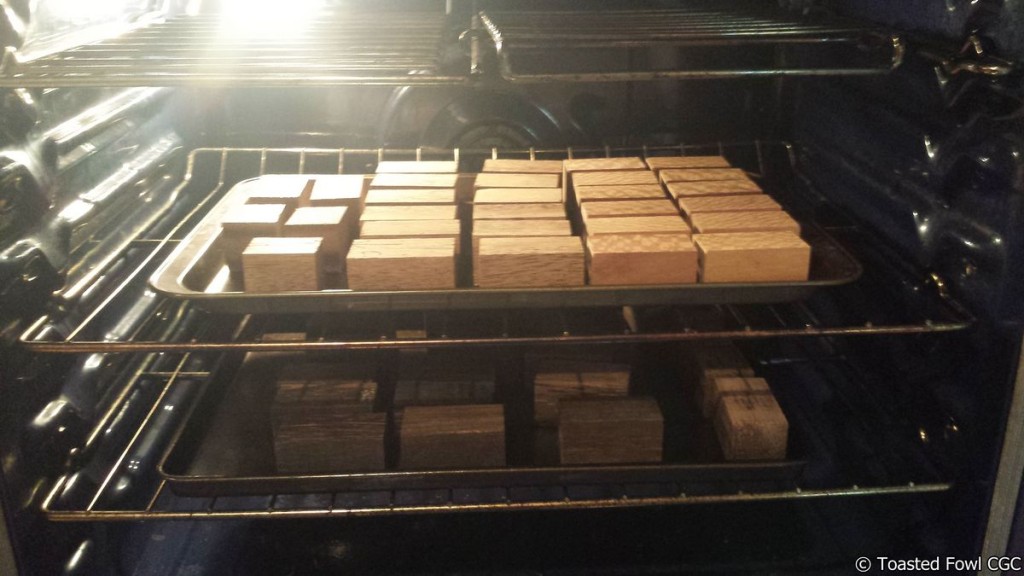
Game call blanks in the oven to remove the remaining moisture in the wood.
To begin the stabilizing process, the wood blanks need to be dry, very dry. The wood blanks have been cut, pre-bored and acclimating in the shop for a while. The call blanks are put in the oven for 24 hours at 200 degrees to remove the remaining moisture. After they are out of the oven they are either put in the vacuum chamber or put into a zip lock bag so moisture doesn’t equalize back into the wood..
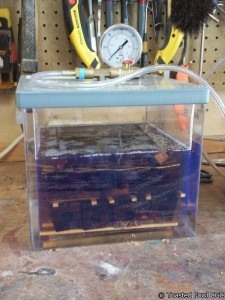
Vacuum chamber with Black Palm call blanks submerged in resin.
The vacuum chamber is a sealed acrylic box that I hook a vacuum pump to. The whole idea is to remove all the air from the wood call blanks as much as possible. The blanks are stacked in the vacuum chamber, weighted down and then a heat activated resin (Cactus Juice) is poured over the blanks so they are submerged. The vacuum pump is turned on and the air begins to be sucked out of the chamber. The resin has a very thin viscosity (almost like water). The vacuum sucks the air out of wood creating bubbles that rise to the top, out of the resin and then sucked out by the vacuum pump. After about 1 1/2 – 2 hours, most all of the all the air is out of the wood. The vacuum is released and the resin submerged wood takes in the resin where the air was before. I usually soak the wood in the resin for at least double the time that it took to get the air of the wood. Sometimes I’ll soak the blanks over night with especially low density wood. When the wood no longer floats, that indicates good resin saturation into the wood.
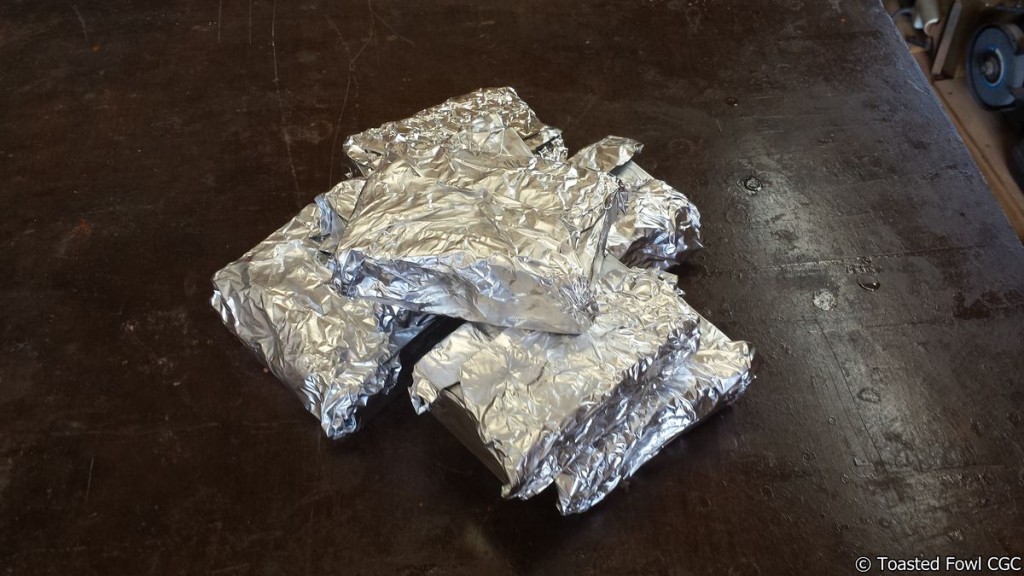
Call blanks wrapped in aluminum foil and ready for the oven to set the resin.
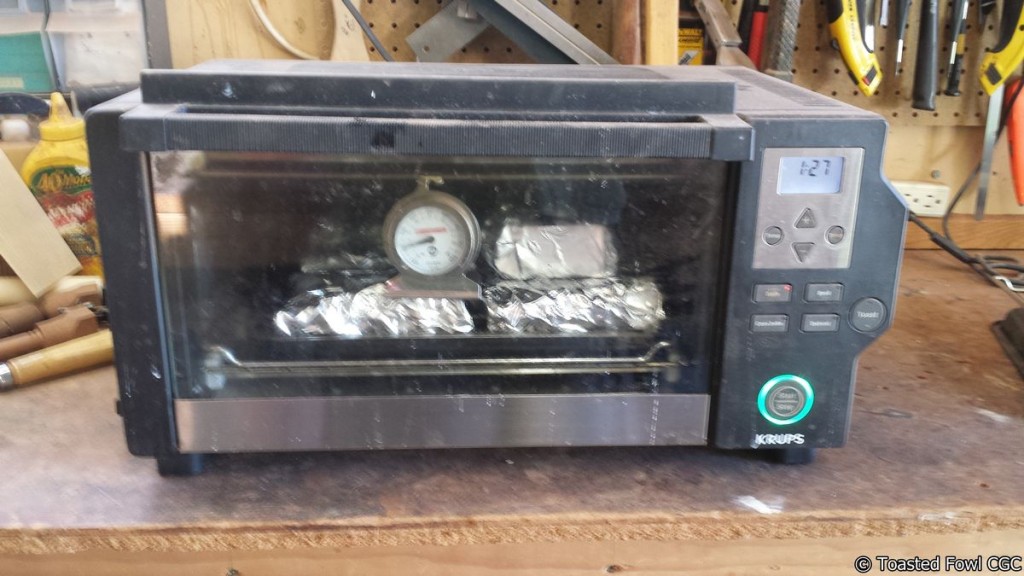
Foil wrapped blanks in the toaster oven at 200 degrees to set the resin.
Since the resin is heat activated I need to bake the blanks again to set the resin within the blank. The call blanks can’t directly touch each other or they will permanently stick together when the resin hardens. I let the excess resin drip from the blank before rolling it in aluminum foil. I can put multiple blanks into one piece foil by simply rolling them up without touching another blank. I put the foiled blanks back into the oven at 200 degrees for about 2-3 hours to activate the resin. After the blanks are baked and cooled, I simply peel the foil of the the resin infused blanks and run drill bit to clean resin out of the drilled holes.
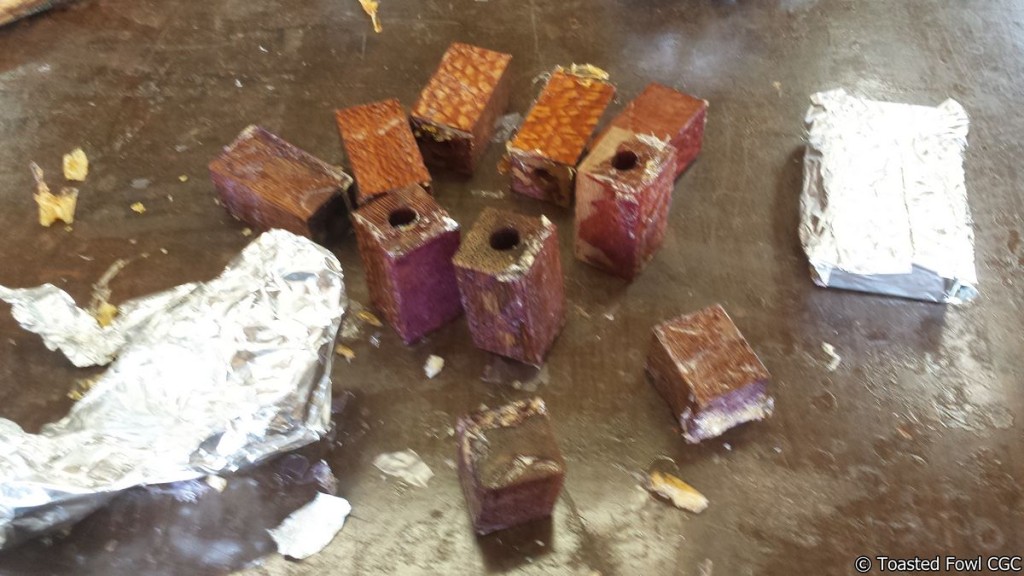
Unwrapping the foil off of the blanks.
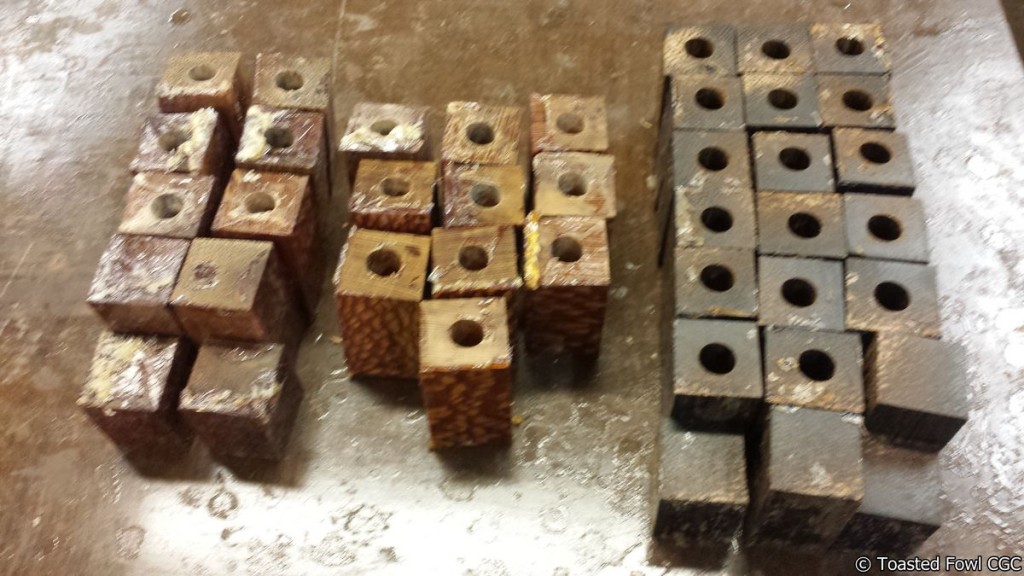
All the blanks complete and ready to turn.
I can feel the difference in the weight of the call blanks after stabilization. The stabilized call blank now have the density of other wood I don’t have to stabilize. The palm woods are very stringy and tear out severely when turning before stabilizing. After, they turn really smooth and the waste comes off as dust instead of chunks and strings. I have never had a stabilized call spider crack the finish. A totally worthwhile step in building quality calls with beautiful but lower density woods.
If you are interested in wood stabilizing in your own shop, contact Curtis at http://www.turntex.com/. He can get you setup and answer all your questions.
by Sean K | Apr 11, 2015 | Duck Calls, New Colors
I’ve been building calls with some of the new colors of acrylic I have. These calls are single reed, that sound really low and raspy with a nice ring to them. Here are a few of the calls that are up for sale in the shop with more combinations in the shop. Click on the photo below to see all the All Acrylic Mallard Calls
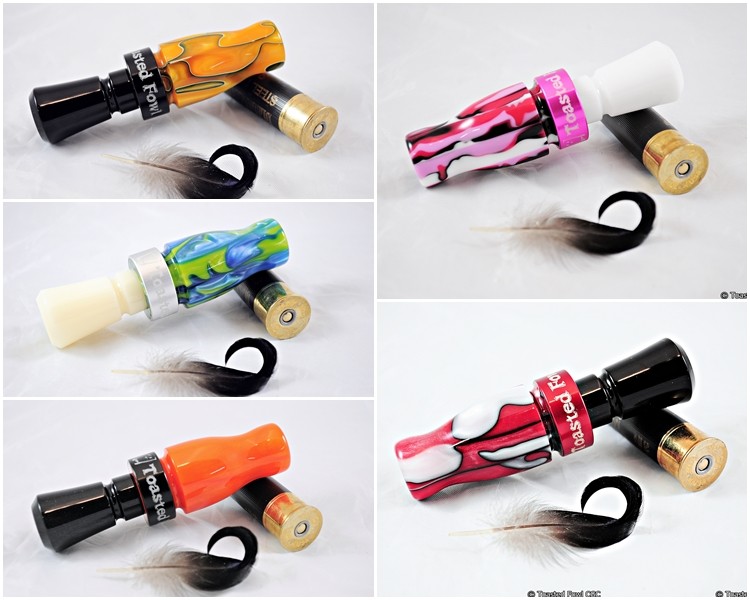
Acrylic Duck Calls (Clockwise from Top Left) – Orange Tuscan Sun w/ Black, Black & Berry Camo w/ White, Fire & Ice w/ Black, Orange Pearl w/ Black Pearl, Seaweed Bay w/ Ivory.
If you want a different color combination than what is in the shop let me know and I will be happy to custom build on for you. I can also build them with a double reed insert if you want too.
by Sean K | Apr 1, 2015 | Bite Reed Elk Calls, Elk Calls, New Colors
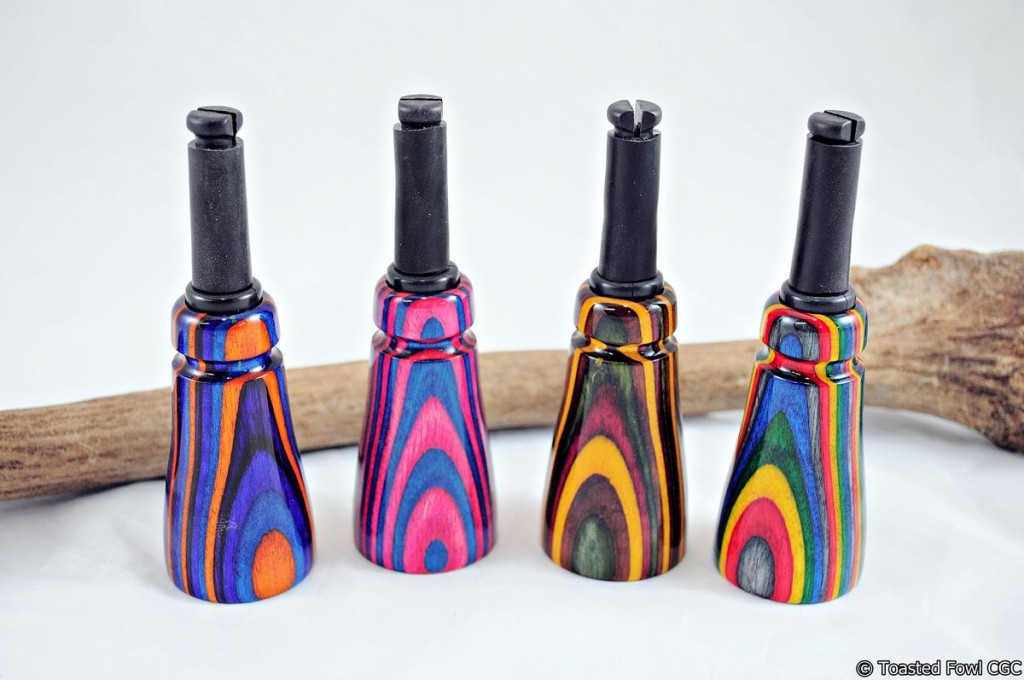
New Colors of SpectraPly Cow Elk Calls (L-R) Gemwood, Cotton Candy, Firestorm & Confetti
Just finished up a few new colors of elk calls. These brightly colored elk calls may seem too vibrant, but I have had request for the brighter colors. The brighter colors are useful to see a call on the ground or a stump that has been dropped or set down. They also are kind of stylish too. To see all the Cow Elk Bite Reed Calls or to order a call, just click HERE!
by Sean K | Mar 18, 2015 | Field Staff
Like to welcome Joe Lang to the Toasted Fowl Field Staff. Joe has successfully hunted Antelope, Elk, Mule Deer and Moose. He also hunts bear, turkeys, ducks, geese and upland birds. His favorite hunt is elk.
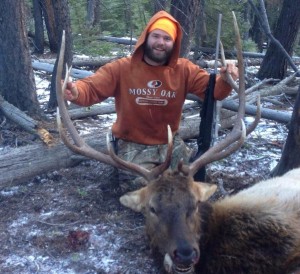
Toasted Fowl Field Staffer Joe Lang with his 2013 elk.
by Sean K | Mar 10, 2015 | Elk Calls

Last 9 RMEF Oregon Camo Supreme Cow Elk Bite Reed Calls.
The last 9 of the Rocky Mountain Elk Foundation Oregon chapter calls headed out the door. One call went to every Oregon chapter. See them at your local RMEF Oregon Chapter banquets.















